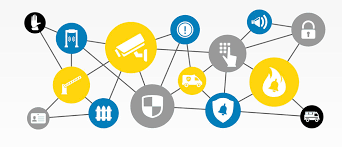Security isn’t just about walls and locks anymore. In today’s interconnected world, protecting a workplace means thinking in layers—digital, physical, and operational. It requires a system where every element communicates with the others, where access points aren’t just doors but data-driven checkpoints, and where surveillance doesn’t just record—it anticipates.
That’s the foundation of a modern, integrated security strategy. It combines access control, security cameras, structured cabling, and IT managed services into one cohesive ecosystem. Each part does its job independently, but together they create a smarter, more responsive workplace environment.
When businesses design their security around integration, they don’t just protect assets—they enable productivity, accountability, and scalability.
Why Single-Solution Security Falls Short
Relying on one piece of technology to secure a workplace is like locking the front door and leaving the windows open. A standalone camera system might record footage, but without access control, it can’t stop unauthorized entry. A network of access cards may control who enters, but without real-time monitoring, it doesn’t catch suspicious behavior.
This is where layering becomes essential. The goal isn’t redundancy—it’s resilience.
Integrated systems allow each technology to fill a specific role while enhancing the others. Security cameras can pair with access control to verify entry, structured cabling ensures clean and uninterrupted communication between systems, and IT managed services maintain, troubleshoot, and upgrade the entire framework to keep it secure from emerging digital threats.
Access Control: The Frontline Filter
Access control does more than lock and unlock doors. At its core, it’s about determining who, when, and where. With the rise of remote work policies, hybrid schedules, and on-demand access, this function has evolved well beyond keys and pins.
Modern access control systems provide role-based credentials, mobile app integration, and event logging—all of which feed into an organization’s broader digital infrastructure. These systems allow administrators to:
- Limit entry to specific times or zones
- Track movement across secure areas
- Remotely adjust permissions as roles change
When tied into broader systems—like surveillance or building management—access control becomes a source of real-time data, enabling a more proactive approach to workplace safety.
Security Cameras: From Passive Recordings to Active Intelligence
Cameras were once passive observers. Today, they’re active participants in business operations.
With real-time monitoring, motion detection, and cloud-based video storage, modern security cameras do far more than just archive footage. They trigger alerts, flag anomalies, and support investigations in ways that used to require dedicated on-site personnel.
But that level of intelligence only works when the cameras are part of an integrated system. Surveillance linked to access control can immediately verify whether an entry attempt was authorized. Footage stored over structured cabling is faster to retrieve and less prone to corruption or downtime. And with IT managed services in place, the system stays updated against potential breaches or technical failures.
It’s not about the number of cameras—it’s about what they’re connected to.
Structured Cabling: The Quiet Backbone of It All
Every digital system—security, communication, IT—relies on infrastructure. And in the case of integrated security, that infrastructure is structured cabling.
Think of it as the nervous system of a modern building. Clean, organized, and scalable, structured cabling ensures that each piece of hardware—from card readers to cameras—can talk to one another without interruption. Without it, systems become siloed, maintenance becomes chaotic, and upgrades become costly.
A well-designed cabling setup not only improves performance, it future-proofs the environment. As new security technologies evolve, they can be added without a complete overhaul.
This kind of foresight is what separates reactive security plans from resilient ones.
IT Managed Services: The Link Between Security and Scalability
Integrating access control, security cameras, and structured cabling is powerful—but only if the system stays healthy. That’s where IT managed services come in.
An IT managed services provider monitors the system around the clock, ensures that patches and updates are applied promptly, and acts as a proactive guardian against network vulnerabilities. Their role bridges the gap between physical and digital security.
Instead of relying on reactive tech support, businesses with managed services benefit from:
- Regular health checks and maintenance
- Faster incident response
- Expert guidance for expansions or upgrades
- Data protection and compliance assurance
When all components of a security ecosystem are under one digital umbrella, the workplace becomes safer not just from intruders, but from system failure, data breaches, and downtime.
Integration in Action: Real-World Advantages
The value of layered security isn’t theoretical. It’s practical.
When an access control system detects an after-hours entry attempt, it can alert a centralized IT dashboard and prompt a security camera to focus on the zone in question. If suspicious behavior is verified, an IT services team can respond remotely—locking down systems, notifying authorities, or investigating access logs.
All of this happens without delay, without finger-pointing between vendors, and without risking human oversight.
And because the entire system rests on structured cabling, it’s reliable even under strain. Whether it’s a sudden influx of network traffic or a system reboot, the architecture holds.
Complex Security, Made Seamless
The modern workplace is no longer a single, static space. It’s a dynamic environment with digital entry points, rotating staff, and hybrid infrastructure. Security solutions must be as adaptable as the businesses they protect.
Complex Security Solutions understands this shift. By aligning core technologies like access control, structured cabling, IT managed services, and security cameras, they help businesses move beyond patchwork fixes to build lasting systems of trust and control.
Because in a connected world, security isn’t just what you lock down—it’s what you connect.






